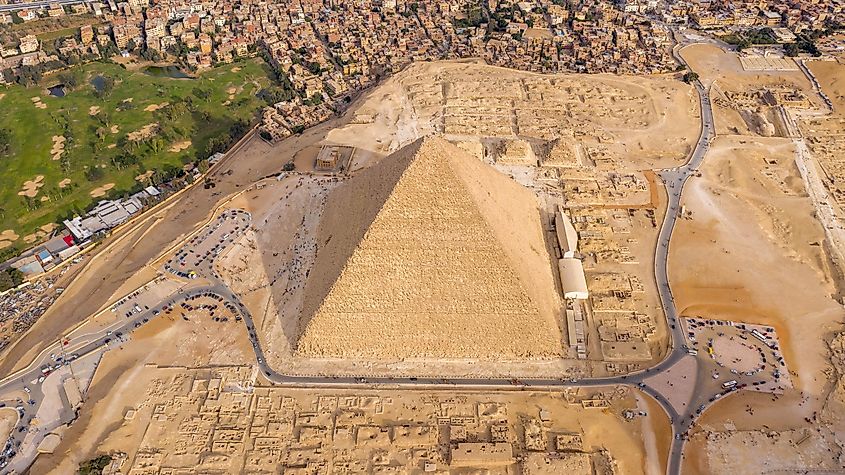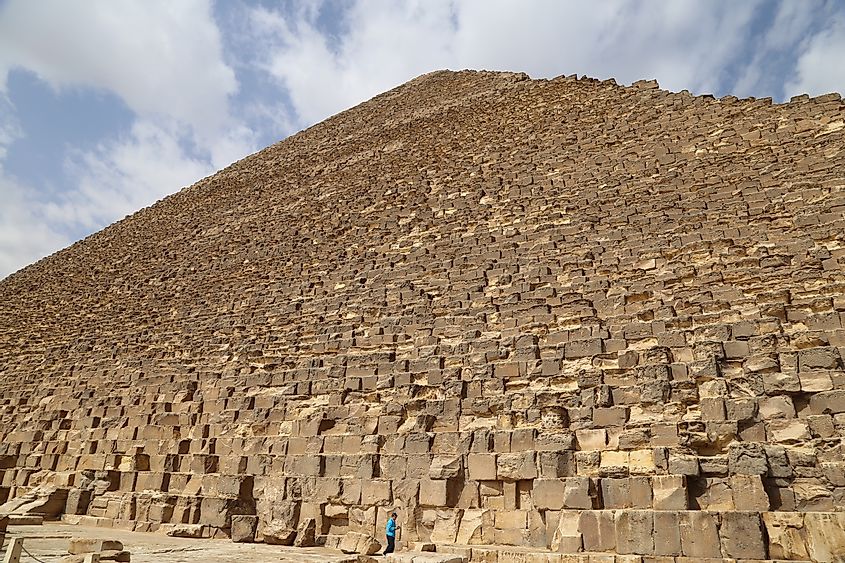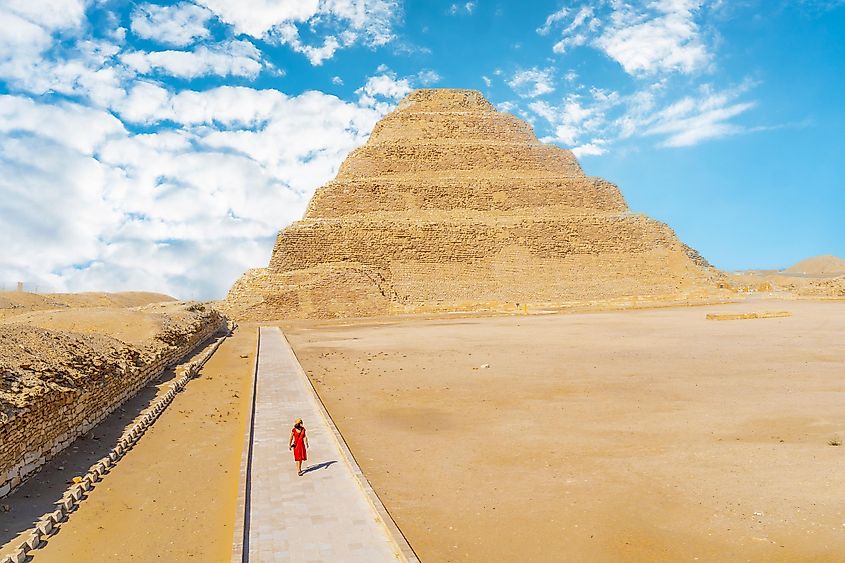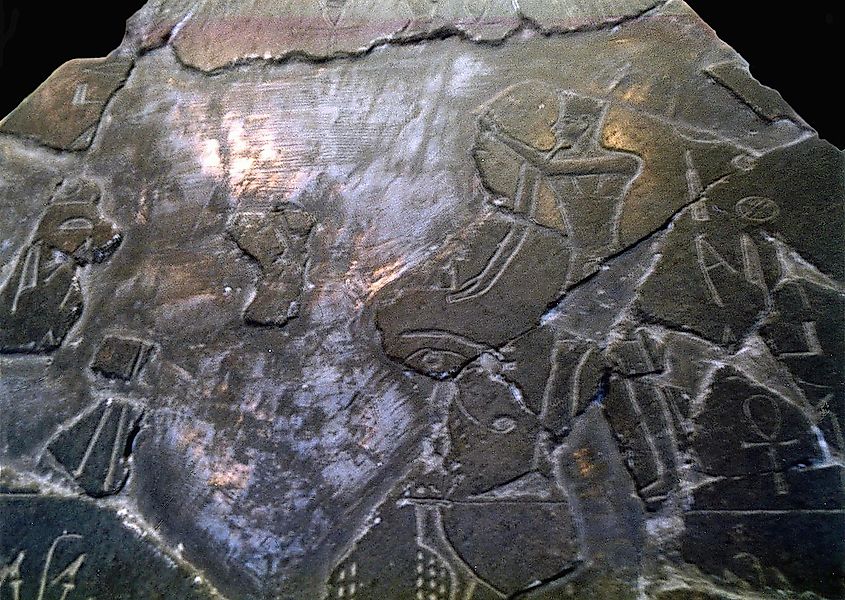
How Long Did It Take To Build The Egyptian Pyramids?
The pyramids of Egypt are among the most incredible wonders of the ancient world. Today, millions flock to Egypt to witness these architectural marvels whose very existence has left even modern historians and engineers baffled. Unraveling the mysteries of who built these pyramids and why and how they were built is akin to spilling secrets buried in dunes since the dawn of recorded history. Yet, much research has been conducted through centuries to elucidate the truth behind the construction of these gigantic structures which possibly took anywhere from 15 to 30 years to be completed. Here is what is known till now:
The Timeline Of Construction

It is important to note that the Nile valley of Egypt was settled in 3500 BCE, but the first pyramids began appearing after 2700 BCE. For many civilizations worldwide, 800 years is not typically enough to transition from simple agriculture to large-scale organization and construction, so the Egyptian dynasties set a difficult precedent to follow. Between 2600 and 2500 BCE, the iconic Pyramids of Giza were built during the 4th Dynasty. For reference, the 1st Dynasty lasted between 3100 BCE and 2900 BCE, and sets of the oldest Hieroglyphs originated from this era. A pause in pyramid building occurred between 2300 BCE and 2000 BCE, but after a resurgence in popularity, the last pyramids of the Great Egyptian dynasties ended just before 1700 BCE. Worth keeping in mind is that each pyramid was designed to be a tomb for a Pharaoh, although wealthy persons often constructed pyramids of their own.
The Construction Process

According to estimates, each pyramid took 15 to 30 years to be built. The varying sizes range from 1.2 million to 92 million cubic feet, and due to the primary ingredient being massive limestone blocks, it is understandable that some pyramids took longer than others. Interestingly, the Egyptians did not utilize wheel-shaped mechanisms in a significant manner, which minimizes theories that the stones were regularly rolled to the pyramids on a series of cylinders. Some hieroglyphs indicate that massive teams of people pulled sleds, and water was poured over the ground to reduce friction. While 30 years may seem like a long time, that would hint at a pace of one block being laid down every 3 minutes, given a total of 2.3 million blocks in the Great Pyramid. Copper tools and sand abrasion were used to cut out these limestone blocks, which originated 6.2 miles south and were transported over the Nile by boat. Finally, ramps that wrapped around the pyramids enabled the placing of each block, and the remains of those ramps have been preserved near several pyramids.
Who Built The Pyramids?
Famous modern interpretations have given the world the impression that the pyramids were built entirely by enslaved people. However, this belief is disputed by many current scholars. Agricultural workers often built great works like the cathedrals of Europe after harvest and planting seasons had ended, and similar conditions could have granted the labor needed to build the pyramids. Regular Nile floods would disrupt the use of farmlands, and a solution was to provide regular work through the construction of these massive tombs. Therefore, based on archaeological findings of the conditions of burial plots for these workers, it has been concluded that they were, for the most part, a skilled class of laborers.
The Step Pyramid

The very first pyramid, The Step Pyramid, was built around 2670 BCE for the Pharaoh Djoser. Located in the flattened burial fields of Saqqara, this pyramid was designed by the famous architect Imhotep. At over 200 feet tall, this structure may have been the tallest manmade marvel at the time of its construction. Like subsequent tombs, the purpose of the complex was to provide the dead pharaoh an adequate transition into the afterlife. Moreover, while the pyramid is the centerpiece of the design, elaborate funerary grounds also encase the premises. One theory for the motivation of the design is that it would be visible from the nearby city of Memphis. However, the many alterations to the original blueprint throughout its construction show that the project may have experienced uncertain phases. Later pyramids experienced similar issues, wherein the steep angle of the limestone decreased unexpectedly halfway up to aid stability.
The Pyramids Of Giza

In 2550 BCE, the Egyptian Old Kingdom was thriving. To commemorate the success, Pharaoh Khufu constructed a 481-foot-tall pyramid, known today as The Great Pyramid. Three chambers are located internally, which once safeguarded the king’s sarcophagus and his most valued possessions. Later, Pharaohs Khafre and Menkaure constructed pyramids for themselves, both completed by 2504 BCE. The logic followed the old tradition: the temple complex would appease the gods, and the treasures they buried themselves with would be helpful in the next life. Nearby, The Great Sphinx stands guard outside of Khafra’s pyramid, carved entirely out of a limestone outcrop. The infamous Sultan of Egypt, Al-Aziz Uthman, attempted to destroy Menkaure Pyramid in AD 1196 but quit when he realized it would be impossible to move this mountain of rock.
The Pyramid Of Khendjer

Many large pyramids were constructed for pharaohs, but the last one is considered the Pyramid of pharaoh Khendjer and is fittingly located in Saqqara, where the first one was made. This pyramid stands at 122 feet and was the only one completed in the 13th Dynasty. Damaging excavations in the 1930s left the site in ruins. In retrospect, this was likely the final pyramid due to the immense cost and organization needed to construct these monuments, and after a thousand years, the religious reasons were not relevant enough to the ever-changing populations. However, the pyramids of Piye and Taharqa were built in 721 BCE and 664 BCE, respectively, during a small revival.
Hellenic travelers in the fifth century BCE made a list of the seven great artificial monuments that humankind had assembled, and it is obvious why the Egyptian Pyramids were included. The colossal proportions, and very little explanation of its construction technology, have itched on the minds of engineers for thousands of years. Conspiracy theories, which include beliefs about the extraterrestrial, neglect to commemorate just how clever Egyptian ancestors were with the tools they had at their disposal. Today, these pyramids still operate as popular tourist destinations and are driving forces in the local economy; in that regard, they are a generous inheritance to receive from forefathers.











